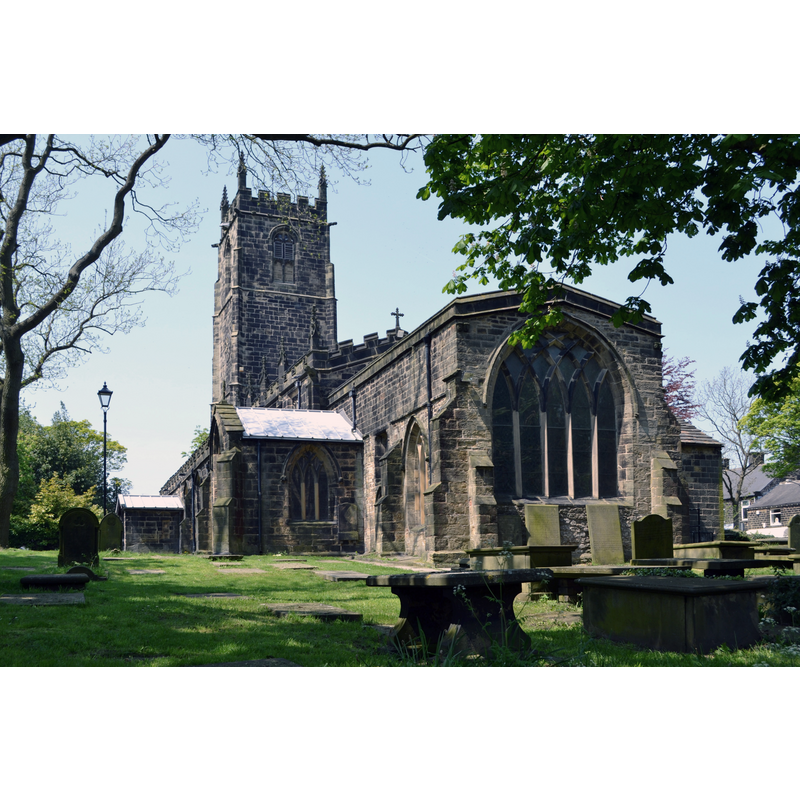Penistone / Pangeston / Pengestone / Peniston

Image copyright © Simon, 2010
CC-BY-SA-2.0
Results: 3 records
design element - motifs - varied - in a rectangle
Scene Description: [cf. Font notes]
Copyright Statement: Image copyright © See Around Britain
Image Source: edited detail of a digital photograph in See Around Britain [https://seearoundbritain.com/images/28113/P1730688_1.JPG] [accessed 19 November 2018]
Copyright Instructions: PERMISSION NOT AVAILABLE -- IMAGE NOT FOR PUBLIC USE
view of church exterior - northwest view
INFORMATION
FontID: 02030PEN
Object Type: Baptismal Font1
Church/Chapel: Parish Church of St. John the Baptist
Church Patron Saints: St. John the Baptist
Church Location: Shrewsbury Road, Penistone, Sheffield S36 6DY, UK -- Tel.: (01226) 370006
Country Name: England
Location: South Yorkshire, Yorkshire and the Humber
Directions to Site: Located off (S) the A628, 12 km WSW of Barnsley
Ecclesiastic Region: Diocese of Sheffield
Historical Region: Hundred of Staincross -- formerly WRYrks
Font Location in Church: Inside the church, at W end of the S aisle
Century and Period: 15th century, Perpendicular
Church Notes: original church possibly Anglo-Saxon (masonry traces and remains of early cross built into the walls);
Font Notes:
Click to view
There are two entries for Penistone in the Domesday survey [http://opendomesday.org/place/SE2403/penistone/] [accessed 19 November 2018] neither of which mentions cleric or church in it. Glynne's 27 July 1846 visit to this church, (in Butler, 2007) reports: "The font is in the corner of the south aisle, and Thrid Pointed. The bowl octagonal, with starlike panelling, diminishing towards the base. It seems late." Listed in Cox & Harvey (1907) as a baptismal font of the Perpendicular period. Noted in Morris (1932) as one of two fonts [the other at Ferry Fryston] in this county "the carving on which is only partly completed". Morris (ibid.) describes the font: "Octagonal font, apparently Trans[itional]. Two of the eight faces have never been carved." Mee (1941) dates the font to the 13th century. The entry for this church in Historic England [Listing NGR: SE2465203317] notes: "Church. Masonry in nave, possibly pre-Conquest, arcades C13, chancel c1300, aisles, clerestorey and tower later C14 or C15. Deeply-coursed, squared stone, rubble to chancel. Lead roof. West tower, 6-bay nave with 4-bay north and south aisles and south porch, 2-bay chancel with north and south single-bay chapels and north-east C19 vestry. [...] Octagonal bowl-shaped font on square pedestal." Font dated in Harman & Pevsner (2017) as "Medieval".
COORDINATES
Church Latitude & Longitude Decimal: 53.5259, -1.6297
Church Latitude & Longitude DMS: 53° 31′ 33.24″ N, 1° 37′ 46.92″ W
UTM: 30U 590838 5931649
MEDIUM AND MEASUREMENTS
Material: stone, type unknown
Font Shape: octagonal (mounted)
Basin Interior Shape: round
Basin Exterior Shape: octagonal
LID INFORMATION
Date: modern
Material: wood, oak
Apparatus: no
Notes: low-dome with carved sides and ball finial; modern
REFERENCES
Cox, John Charles, English Church Furniture, New York: E.P. Dutton & Co., 1907
Glynne, Stephen Richard, The Yorkshire notes of Sir Stephen Glynne (1825-1874), Woodbridge: The Boydell Press; Yorkshire Archaeological Society, 2007
Harman, Ruth, Yorkshire West Riding: Sheffield and the South, New Haven; London: Yale University Press, 2017
Mee, Arthur, The King's England, Yorkshire, West Riding, London: Hodder & Stoughton, 1941
Morris, Joseph Ernest, The West Riding of Yorkshire, London: Methuen & Co., 1932
![[cf. Font notes]](/static-50478a99ec6f36a15d6234548c59f63da52304e5/others/permission_not_available.jpg)
